Deep beneath the waters of Norris Lake in Tennessee lies a forgotten piece of history that once thrived with life, laughter, and community. Loyston was a real town with homes, churches, and families until the Tennessee Valley Authority flooded the valley in 1936 to create the lake.
Today, the submerged town only resurfaces during extreme droughts, giving visitors a rare and haunting glimpse into the past. When the water recedes, remnants like stone foundations and old roadbeds emerge from the depths, stirring memories of a vanished way of life.
It’s a quiet, eerie reminder of the sacrifices made in the name of progress.
1. A Town Sacrificed for Progress
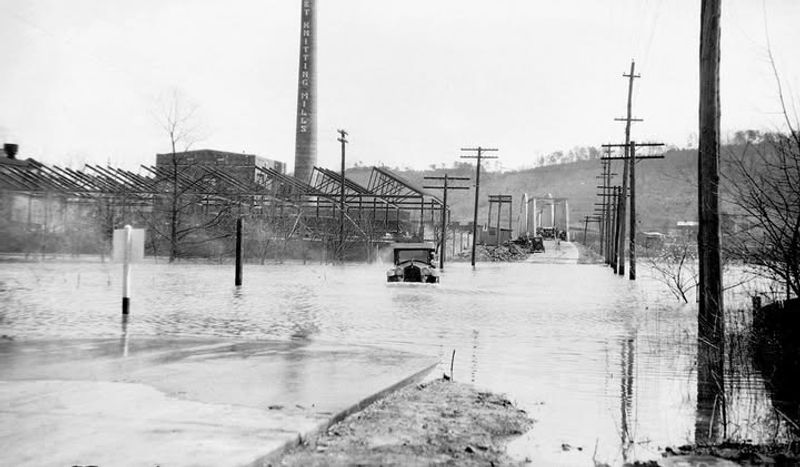
Loyston wasn’t just abandoned randomly. The Tennessee Valley Authority decided in the 1930s that creating Norris Lake would bring electricity and economic opportunity to the region. Families who had lived there for generations received notice that their homes would soon be underwater.
More than 2,800 families had to relocate from the valley. They packed up their memories, dismantled their houses, and moved their loved ones from family cemeteries to higher ground. The transition was heartbreaking for many who had deep roots in the community.
Today, visitors can still sense the weight of that sacrifice when the water levels drop. Foundations of old buildings peek through the muddy lake bottom, reminding everyone of what was lost. The creation of the lake brought jobs and power, but it also erased an entire way of life that can never truly be replaced.
2. The Church That Moved Twice
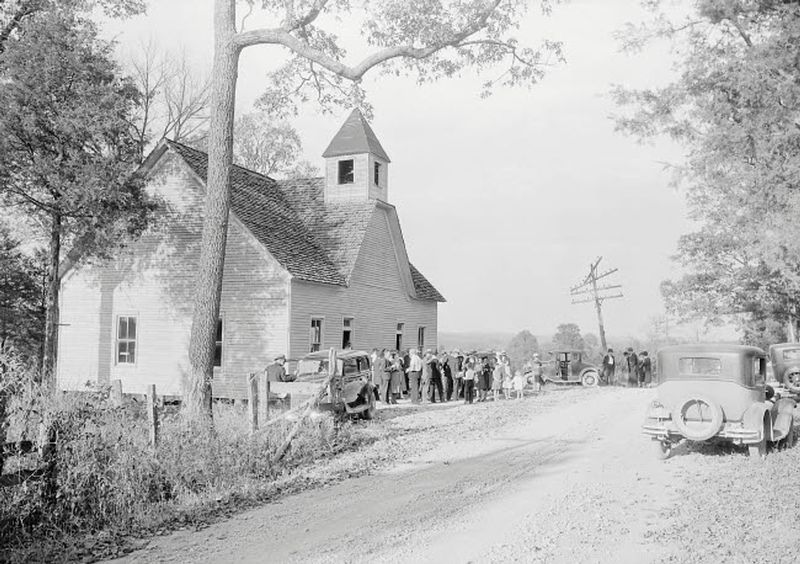
One of the most fascinating stories from Loyston involves the local church building. When the town was set to be flooded, the community decided they couldn’t let their beloved church sink beneath the waves. They carefully took it apart, board by board, and moved it to higher ground.
Years later, the church was moved again to a new location where it still stands today. Visitors can tour the building and see the original wood and craftsmanship that survived both relocations. The pews, windows, and pulpit all carry the history of a community that refused to let their spiritual home disappear.
Local historians say the church represents the resilience of the people who once called Loyston home. Even though their town is gone, the building serves as a living memorial. It’s a powerful reminder that some things are worth saving, no matter how difficult the task might be.
3. Cemetery Relocations Tell Sad Stories

Before the valley flooded, families faced the painful task of moving their ancestors’ graves. Approximately 5,000 graves had to be relocated from various cemeteries around Loyston and nearby communities. Workers carefully exhumed bodies and transported them to new burial grounds on higher elevations.
Some families chose to move their loved ones to established cemeteries, while others created new family plots. The process was emotional and difficult, adding another layer of grief to the already heartbreaking displacement. Many descendants still visit these relocated cemeteries today to honor their heritage.
Occasionally, when lake levels drop dramatically, old cemetery sites become visible underwater. Visitors have reported seeing stone foundations and markers that were left behind. These glimpses into the past create an eerie connection to the families who once mourned at these sacred spots before the water claimed them forever.
4. When Droughts Reveal the Past
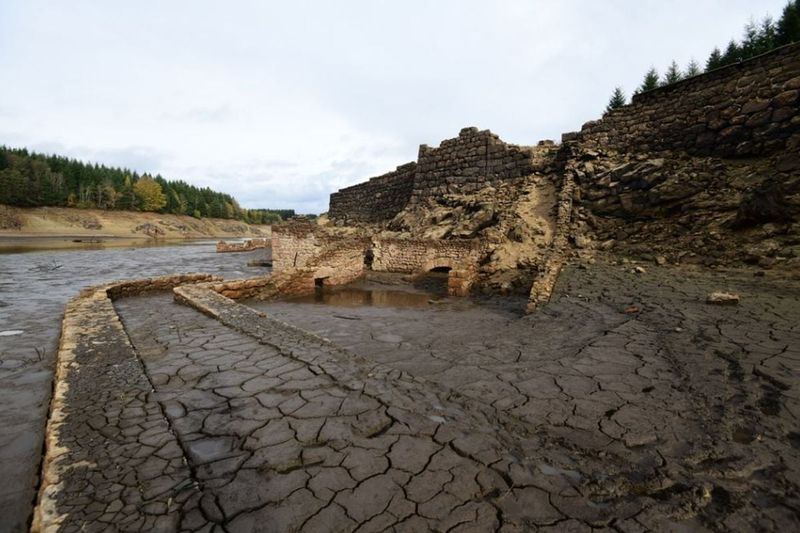
During severe droughts, Norris Lake’s water levels can drop dramatically, exposing the ghostly remains of Loyston. Visitors flock to the shoreline to see foundations, old roads, and other remnants of the town that usually stay hidden beneath the surface. These rare occurrences create a window into history that feels almost magical.
Photographers and history enthusiasts document these moments carefully, knowing they won’t last long. Stone foundations, chimney bases, and even old fence posts emerge from the mud, creating an eerie landscape. Walking among these ruins feels like stepping back in time to a place that exists between memory and reality.
Local guides often lead tours during these drought periods, sharing stories passed down through generations. They point out where the general store stood, where families gathered for community events, and where children once played. These tours help keep the memory of Loyston alive for new generations who never knew the town existed.
5. The Valley Authority’s Ambitious Vision
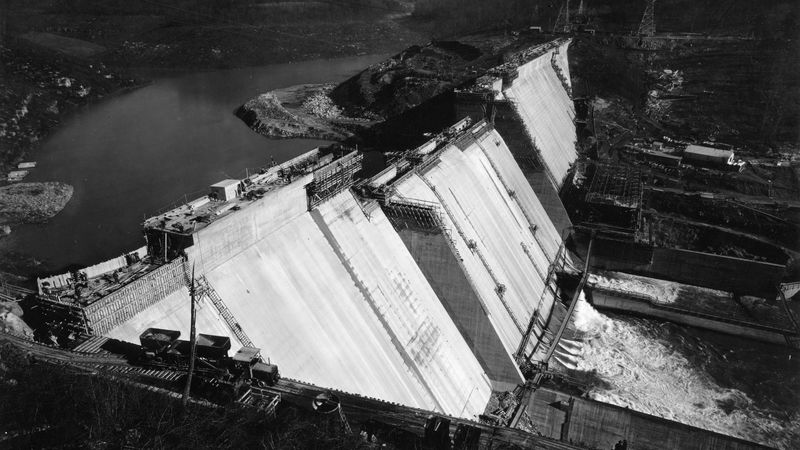
The Tennessee Valley Authority was created during the Great Depression to bring economic development to one of America’s poorest regions. Building Norris Dam and creating the lake was one of their first major projects. The goal was to control flooding, generate electricity, and create jobs for thousands of unemployed workers.
Construction began in 1933 and employed about 3,000 people at its peak. Workers lived in temporary camps and worked long hours to complete the massive dam. The project brought hope to a struggling region, even as it displaced entire communities like Loyston.
Today, Norris Dam stands as an engineering marvel and a testament to Depression-era innovation. Visitors can tour the dam and learn about its construction and impact on the region. The hydroelectric power it generates still serves thousands of homes, fulfilling the original vision while carrying the weight of the communities sacrificed to make it possible.
6. Oral Histories Keep Memories Alive
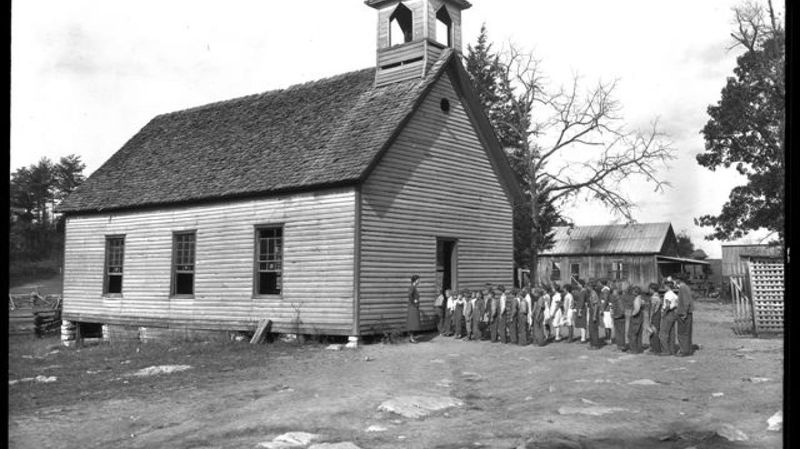
Descendants of Loyston residents have worked hard to preserve their family stories through oral history projects. Local historical societies have recorded interviews with people who lived in the town before the flooding. These recordings capture details about daily life, community traditions, and the emotional impact of losing their homes.
Many of these stories describe a close-knit farming community where neighbors helped each other and everyone knew everyone else. People remember church socials, school events, and harvest celebrations that brought the whole town together. The recordings paint a picture of a simpler time that feels both distant and deeply personal.
Libraries and museums in the area now house these precious recordings and transcripts. Researchers and family members can access them to learn about life in Loyston and the surrounding valley. These voices from the past ensure that the town lives on in more than just the physical ruins that occasionally appear beneath the lake’s surface.
7. The School Where Children Learned
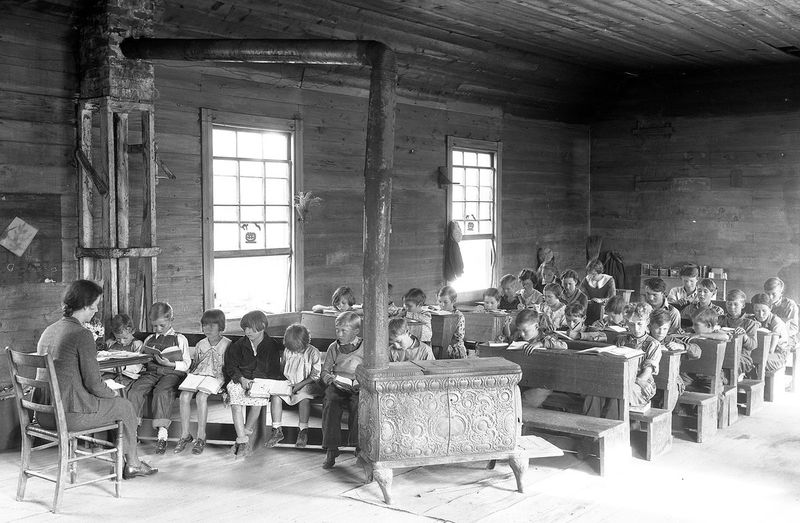
Loyston had its own school where local children received their education before the town disappeared. The building served as more than just a classroom; it was a community gathering place for meetings, elections, and social events. Teachers often lived in the community and knew every student’s family personally.
Students walked to school along dirt roads, carrying lunch pails and books. The curriculum covered basic subjects, and older students often helped teach younger ones. School events like spelling bees and holiday programs drew crowds from across the valley, creating memories that former students treasured for the rest of their lives.
When the school closed ahead of the flooding, it marked the end of an era. Some of the building materials were salvaged and used elsewhere, but the structure itself is now somewhere beneath the lake. Former students who are now elderly still share stories about their teachers and classmates, keeping the spirit of that little school alive through their memories.
8. Farming Life Before the Flood
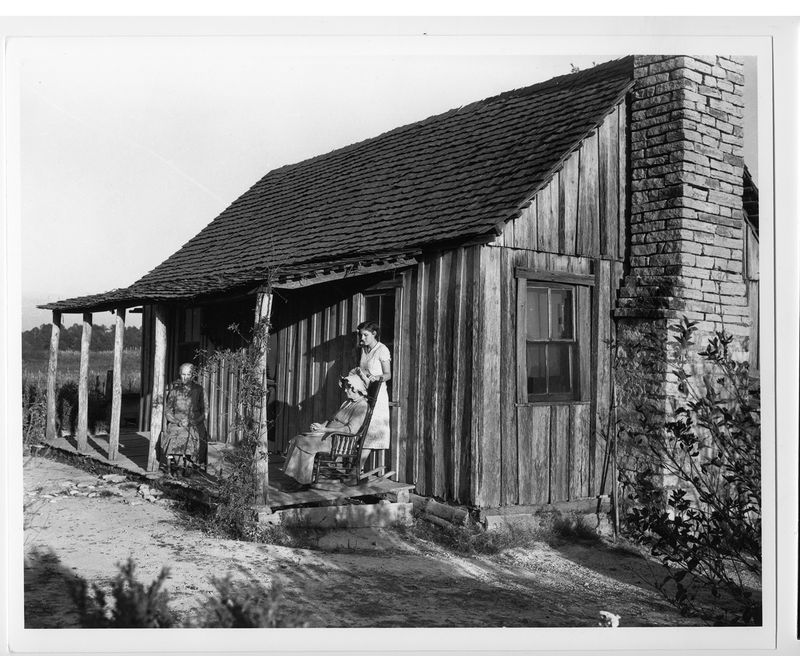
Most Loyston residents made their living through farming, growing crops like corn, tobacco, and vegetables in the fertile valley soil. Families raised chickens, pigs, and cattle, living largely self-sufficient lives. The land provided everything they needed, from food to income, and farmers took great pride in their work.
The growing season determined the rhythm of life in Loyston. Spring brought planting, summer meant tending crops, fall was harvest time, and winter offered a brief rest before starting again. Neighbors often helped each other during busy times, creating strong bonds that went beyond just friendship.
When families learned they had to leave, many mourned the loss of their productive farmland as much as their homes. The valley’s rich soil had been passed down through generations, and leaving it felt like abandoning family legacy. Today, that same land lies beneath the lake, its farming days just a memory shared by descendants who still value agricultural traditions.
9. The General Store Gathering Spot

Every small town needs a heart, and in Loyston, that heart was the general store. This wasn’t just a place to buy supplies; it was where people caught up on news, shared gossip, and built community connections. The store stocked everything from flour and fabric to tools and medicine.
Men often gathered on the porch to discuss crops and weather, while women shopped and exchanged recipes inside. Children looked forward to occasional treats like peppermint sticks or hard candies. The store owner knew every customer by name and often extended credit to families going through hard times.
When the store closed for the last time before the flooding, it symbolized the end of community life in Loyston. The building’s foundation now rests somewhere beneath the lake, but people who remember it say the sense of community it fostered lives on in their hearts. That spirit of neighborliness and mutual support defined what made Loyston special to those who called it home.
10. Roads That Led Nowhere
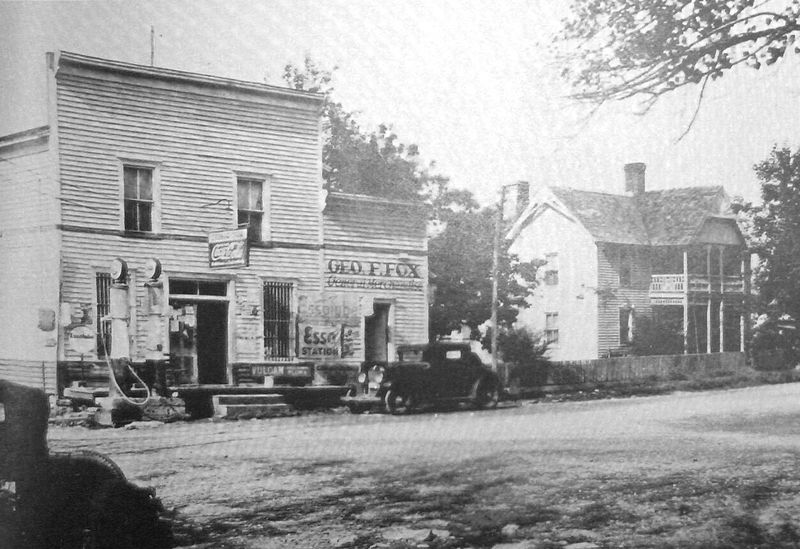
Before Norris Lake existed, a network of dirt roads connected Loyston to neighboring communities. These roads carried wagons, early automobiles, and countless footsteps of people going about their daily lives. Some roads followed the valley floor, while others climbed the surrounding hills, offering beautiful views of the landscape.
When the lake filled, many of these roads simply disappeared beneath the water. Others were cut off abruptly at the new shoreline, leading to nowhere but the lake’s edge. During drought years when water levels drop, traces of these old roads sometimes become visible again as straight lines across the exposed lake bed.
Explorers who venture out during these times report an eerie feeling walking along paths that once connected a living community. The roads serve as ghostly reminders of the daily journeys people made to visit neighbors, attend church, or go to town. They’re physical evidence that Loyston was real, not just a story or legend passed down through generations.
11. Local Legends and Ghost Stories
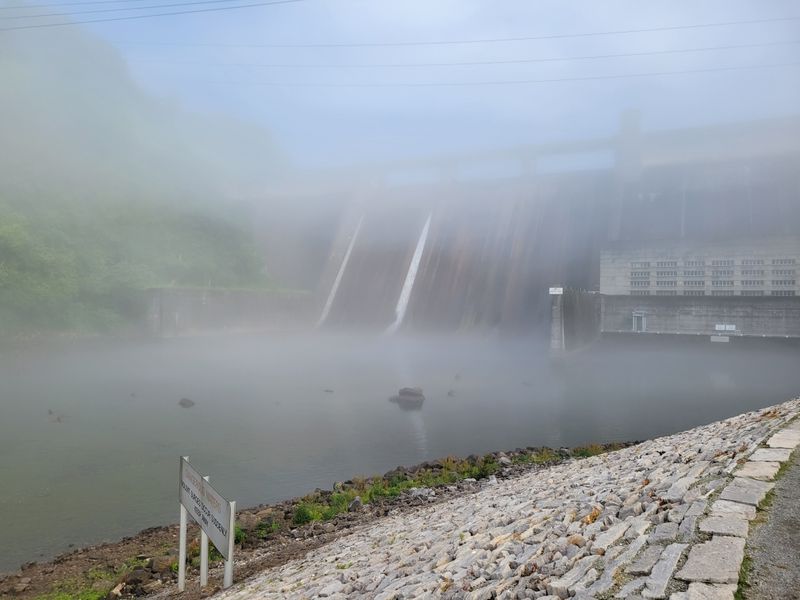
Like many places with dramatic histories, Loyston has inspired its share of local legends and stories. Some people claim to hear church bells ringing from beneath the lake on quiet nights, though no bells were left behind when the town was evacuated. Others report seeing lights moving across the water where the town once stood.
Fishermen occasionally share tales of strange experiences while on the lake, like suddenly feeling cold spots or sensing an unexplained presence. While these stories can’t be verified, they reflect the emotional impact the town’s loss had on the region. The legends keep Loyston’s memory alive in the local imagination.
Whether you believe the stories or not, they represent how communities process loss and change. The tales transform tragedy into mystery, making the flooded town feel magical rather than just sad. For many locals, these legends are another way of ensuring that Loyston is never truly forgotten, keeping the town alive in folklore even as it rests beneath the water.
12. Visiting the Lake Today
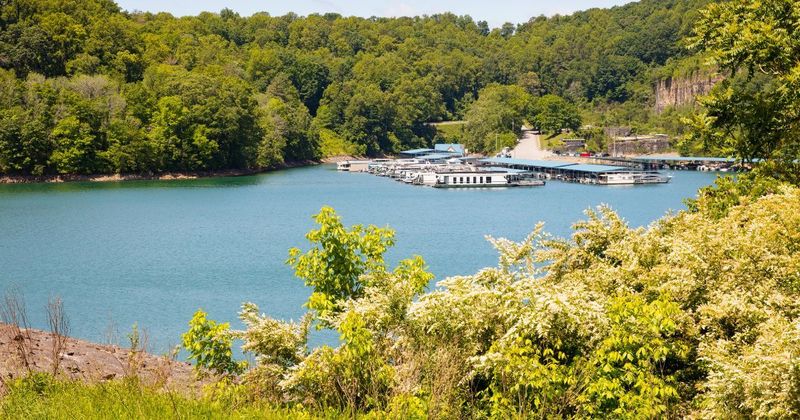
Modern visitors to Norris Lake can enjoy beautiful scenery, excellent fishing, and water recreation while learning about the area’s unique history. The lake covers more than 34,000 acres and has over 800 miles of shoreline, making it a popular destination for boating, swimming, and camping. The surrounding mountains create stunning views that attract photographers and nature lovers.
Several marinas and parks around the lake offer access points and amenities for visitors. Informational signs at some locations tell the story of Loyston and other communities that were flooded to create the lake. Museums in nearby towns display artifacts and photographs from the lost communities, helping visitors understand what lies beneath the water.
The lake represents both progress and sacrifice, a duality that makes visiting it a thought-provoking experience. While enjoying the recreational opportunities, thoughtful visitors remember the families who gave up their homes to make it all possible. Their legacy lives on in every ripple across the water’s surface.
Dear Reader: This page may contain affiliate links which may earn a commission if you click through and make a purchase. Our independent journalism is not influenced by any advertiser or commercial initiative unless it is clearly marked as sponsored content. As travel products change, please be sure to reconfirm all details and stay up to date with current events to ensure a safe and successful trip.